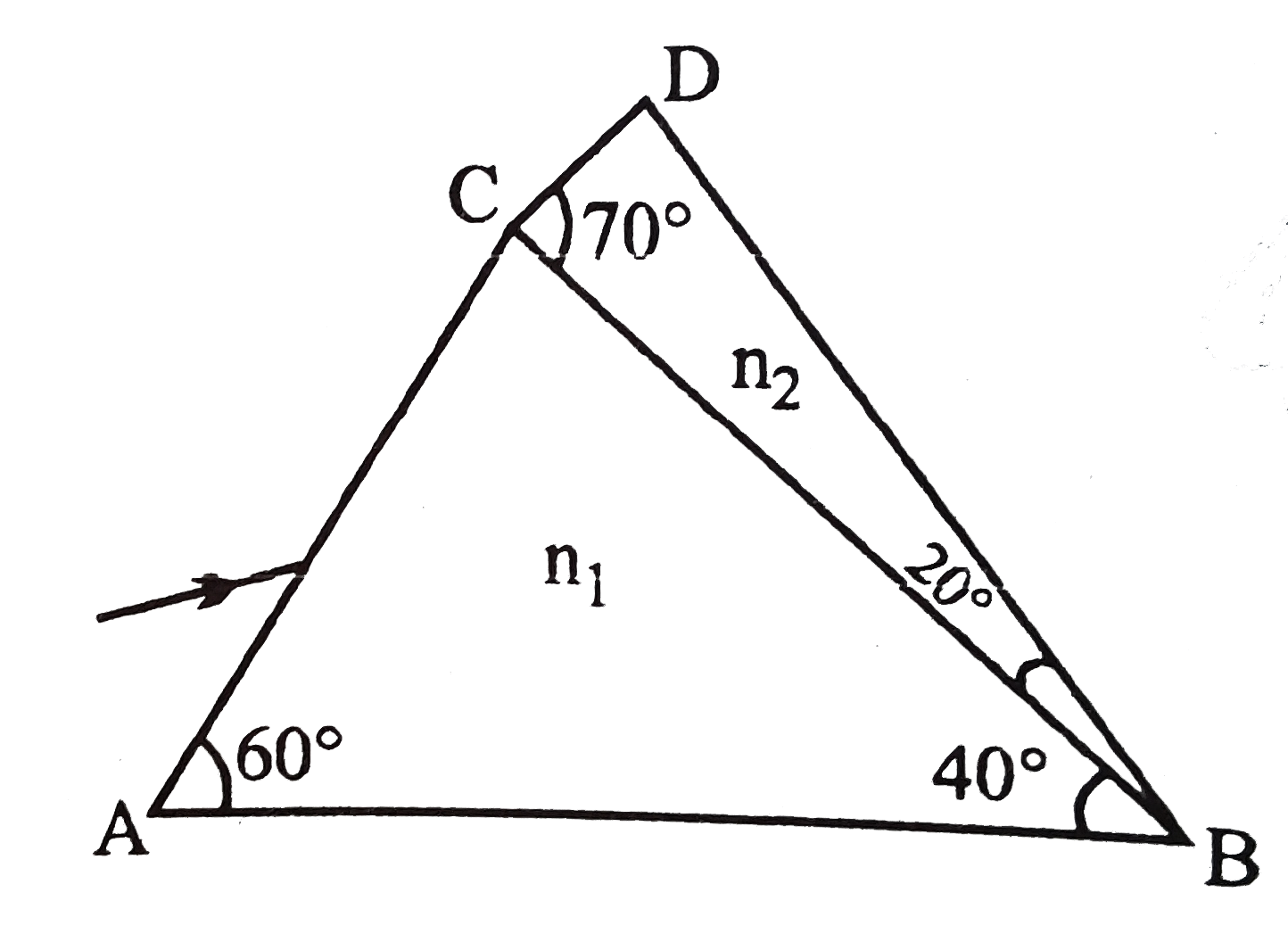Imagine a light planet revolving around a very massive star in a circular orbit of radius R with a period of revolution T. if the gravitational force of attraction between the planet and the star is proportational to R−5/2, then
(a) T2 is proportional to R2
(b) T2 is proportional to R7/2
(c) T2 is proportional to R3/3
(d) T2 is proportional to R3.75.Solution in Gujrati
The correct Answer is:D
Step by step video, text & image solution for Imagine a light planet revolving around a very massive star in a circular orbit of radius R with a period of revolution T. if the gravitational force of attraction between the planet and the star is proportational to R^(-5//2), then (a) T^(2) is proportional to R^(2) (b) T^(2) is proportional to R^(7//2) (c) T^(2) is proportional to R^(3//3) (d) T^(2) is proportional to R^(3.75). by Physics experts to help you in doubts & scoring excellent marks in Class 12 exams.
Updated on:21/07/2023Topper's Solved these Questions
- GRAVITATIONBOOK - ALLEN CHAPTER - GRAVITATIONEXERCISE - EXERCISE 4
9 Videos
- GRAVITATIONBOOK - ALLEN CHAPTER - GRAVITATIONEXERCISE - EXERCISE 2
26 Videos
- GEOMETRICAL OPTICSBOOK - ALLEN CHAPTER - GEOMETRICAL OPTICSEXERCISE - subjective
14 Videos
- KINEMATICS-2DBOOK - ALLEN CHAPTER - KINEMATICS-2DEXERCISE - Exercise (O-2)
47 Videos
Similar Questions
Assertion : The difference in the value of acceleration due to gravity at pole and equator is proportional to square of angular velocity of earth.
Reason : the value of acceleration due to gravity is minimum at the equator and maximum at the pole.
View SolutionTwo satellites of earth S1 and S2 are moving in the same orbit. The mass of S1 is four times the mass of S2. Which one of the following statements is true?
View SolutionA prism of refractive index n1 & another prism of reactive index n2 are stuck together without a gap as shown in the figure.The angle of the prisms are as shown. n1&n2depend onλ,the wavelength of light according to n1=1.20+10.8×104λ2&n2=1.45+1.80×104λ2 where λ is in nm.

(i)Calculate the wavelength λ0for which rays incident at any angle on the interfaceBCpass through without bending at that interface.
(ii) for light of wavelength λ0,find the angle of incidencei on faceACsuch that the deviation produced by the combination of prism is minimum.
View SolutionA particle is moving in xy-plane .At certain instant the components of its velocity and acceleration are as follows ux=3m/s,uy=4m/s,ax=2m/s2anday=1m/s2. The rate of change of speed at this moment is
View SolutionImagine a light planet revoling around a very massiv star in a circular orbit of radius R with a period of revolution T. if the gravitatinal force of attraction between the planet and the star is proportional to R-(5//2)
View SolutionA planet is revolving around a star in a circular orbit of radius R with a period T. If the gravitational force between the planet and the star is proportional to R^(-3//2) , then
View SolutionA planet is revolving around a very massive star in a circular orbit of radius r with a period of revolution T. If the gravitational force of attraction between the planet and the star is proportional to r−n, then T2 is proportional to
View SolutionA small planet is is revolving around a very massive star in a circular orbit of radius r with a period of revolution. T is the gravitational force between the planet and the star is proportional to r ^(-5//2) ,then T will be proportional to
View Solutionकल्पना करो कि एक भारी तारे के परित: R त्रिज्या की वृत्तीय कक्षा में एक हल्का ग्रह परिक्रमण काल T से घूम रहा है। यदि ग्रह व तारे के बीच गुरुत्वाकर्षण बल R−5/2 के समानुपाती हो, तो T2 समानुपाती होगा
View SolutionA light planet is revolving around a very massive star in a circular orbit of radius R with a period of revolution T, if the gravitational force of attraction between the two varies as R^(-5//2) , then T^(2) is proportional to :
View Solutionयदि कोई छोटा ग्रह किसी विशाल तारे के चारों ओर R त्रिज्या के किसी वृत्ताकार कक्ष में T परिक्रमण काल के साथ घूम रहा है। यदि ग्रह तथा तारे के मध्य गुरुवीय बल R−5/2 के समानुपाती है, तो T समानुपाती होगा-
View SolutionImagine a light planet revolving around a very massive star in a circular orbit of radius r with a period of revolution T.If the gravitational force of attraction between the planet and the star is proportional to r−3 ,then the square of the time period will be proportional to
View SolutionImagine a light planet is revolving round a very massive star in a circular orbit of radius R with a time period of revolution T. If the gravitational force of attraction between the star and planet is proportional to R^(-n) , then T^2 is proportional to
View SolutionImagine a light planet is revolving round a very massive star in a circular orbit of radius R with a time period of revolution T. If the gravitational force of attraction between the star and planet is proportional to R−n, then T2 is proportional to
View SolutionA small planet revolving around a large starting a circulation orbit of radius R with a period of revolution T. The gravitaional force of attraction between the star and the planet is proportional to R32 then T is proportional to
View Solutionमाना कि एक हल्का ग्रह किसी बहुत भारी तारे का परिक्रमण कर रहा है, जिसकी कक्षा की त्रिज्या R तथा परिक्रमण काल T है। यदि तारे तथा ग्रह के बीच का आकर्षण बल R−3/2 के समानुपाती है, तो T2 किसके समानुपाती होगा?
View Solution
